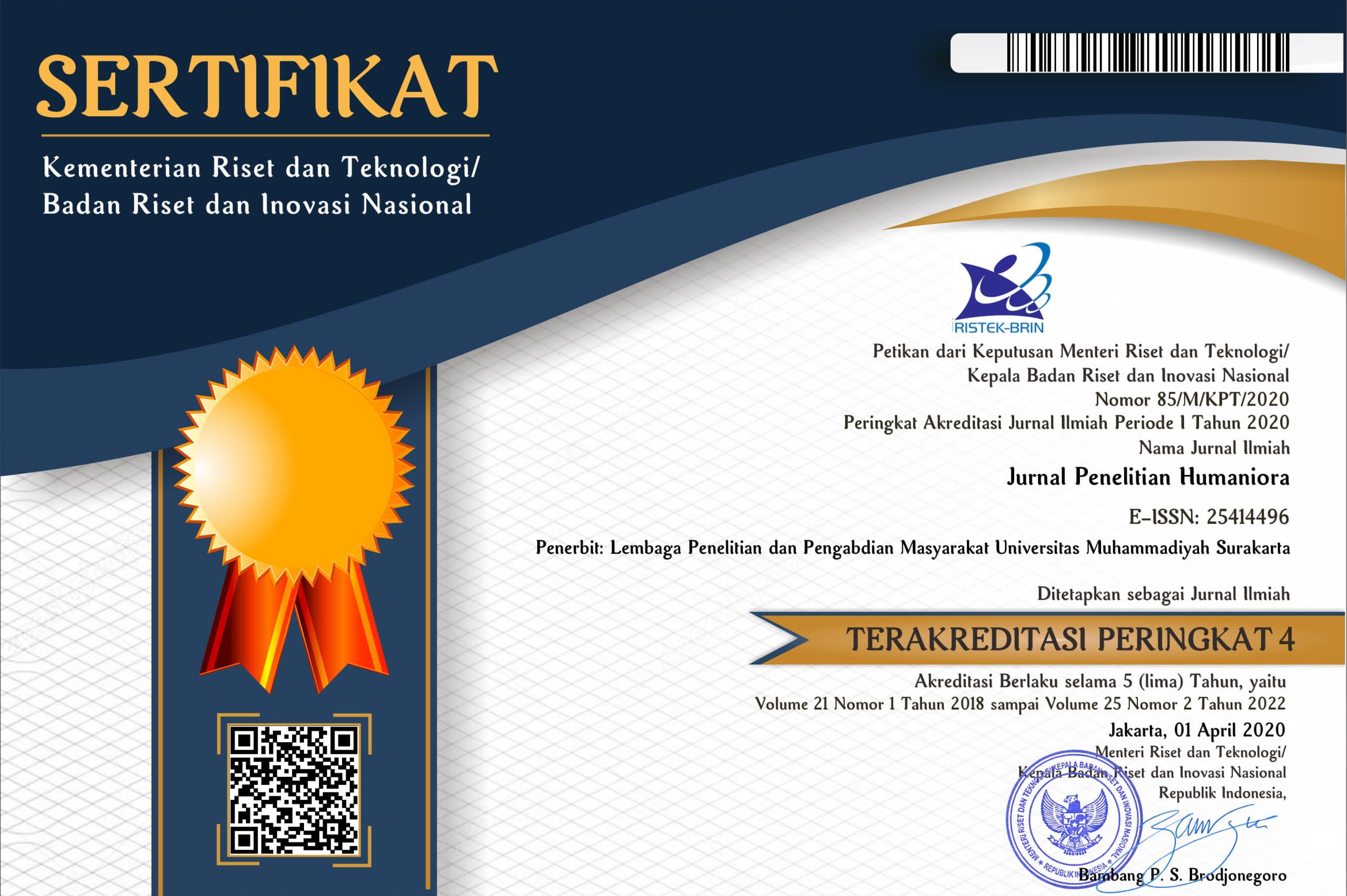MAKNA REFERENSIAL PADA KRITIKAN DI SITUS NGOMIKMAKSA DAN RELEVANSINYA SEBAGAI BAHAN AJAR DI SMA
Tivany Inggar Priatmie(1*), Atiqa Sabardila(2)(1)
(2)
(*) Corresponding Author
Abstract
This study aimed to describe the referential meaning Ngomikmaksa sites, knowing depiction Ngomikmaksa criticism on the site, and determine the relevance of research results as teaching material in high school learning Indonesian. Collecting data using techniques of documentation and technical notes. The method used to analyze data is unified method intralingual subtype referential with advanced engineering techniques Pilah Element Qualifier (PUP), the second match ekstralingual data analysis with advanced technique appeal something equalizing circuit (HBPS), and the third using constant comparison analysis techniques. According to the research, there are three conclusions: based on the results of research on the meaning refrensial in his criticism on the site Ngomikmaksa there is some form of reference, namely the iconic sinsign, icon argument, iconic legsign, rhematic indexical sinsign, rhematic indexical legsign, dicent indexial legsign, rhematic symbol, dicent symbol , and punctuation symbols. From the analysis, it is known that the reference or the sign of the most widely used is the iconic sinsign. The overall meaning of all the data that has been collected is to discuss the events in Indonesia which is considered very unbalanced or unfair. Through the demonstration of the great figures in Indonesia, namely the president, the founder of the party, ministers, artists, governors, where motorcycles online, and permanent employees. All these figures are figures that became the center of public attention in the nearest period. Relations in learning criticism (text anecdotes) in Indonesian can be concluded that the use of polite language when giving a criticism. This was evidenced by the examples given on the site Ngomikmaksa encourage Shiva understand ethics in providing such criticism, using a logical reason, the language must be polite, and invites the reader to think of a solution.
Full Text:
PDFReferences
Djajasudarma, Fatimah. 2012. Semantik 1 Makna Leksikal dan Gramatikal. Bandung: PT Refika Aditama.
Gaines, Elliot. 2006. “Communication and the Semiotics of Space”. Journal of Creative
Communications. Volume 1, Nomor 2, Halaman 173-181.
Hilda, Mufida, 2014, ”Penggambaran Calon Anggota Legislatif Pemilihan Umum 2014 pada Kartun Editorial Harian Kompas”. Commonline Departemen Komunikasi. Volume 4, Nomor 1, Halaman 111-120.
Mahsun. 2005. Metode Penelitian Bahasa: Tahapan Strategi, Metode, dan Tekniknya Pengarang. Jakarta: PT Raja Grafindo Persada.
Manoppo, Romario Deni, 2013, “Wacana Korupsi dalam Karikatur pada Periode Pemerintahan Presiden Paska Reformasi di Kumpulan Karikatur “dari Presiden ke Presiden Edisi Tingkah-Polah Elit Politik”. Jurnal Unair. Volume 2, No. 2.
Moleong, Lexy J. 2014. Metodologi Penelitian Kualitatif. Bandung: PT Remaja Rosdakarya.
Mulyana. 2005. Kajian Wacana Teori, Metode, dan Aplikasi Prinsip-Prinsip Analisis Wacana. Yogyakarta: Tiara Wacana.
Sobur, Alex. 2013. Semiotika Komunikasi. Bandung: PT Remaja Rosdakarya.
Subroto, Edi. 2011. Pengantar Studi Semantik dan Pragmatik (Buku 1. Pengantar Studi Semantik). Surakarta: Cakrawala Media.
Sudaryanto. 2015. Metode dan Aneka Teknik Analisis Bahasa. Yogyakarta: Duta Wacana University Press.
Sukmadinata, Nana Syaodih. 2009. Metode Penelitian Pendidikan. Bandung: PT Remaja Rosdakarya.
Wijana, I Dewa Putu. 2004. Kartun: Studi tentang Permainan Bahasa. Yogyakarta: Ombak Publishing.
Article Metrics
Abstract view(s): 994 time(s)PDF: 1347 time(s)
Refbacks
- There are currently no refbacks.











